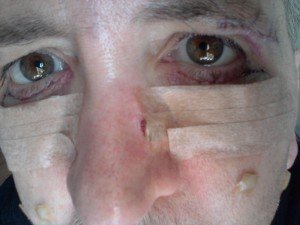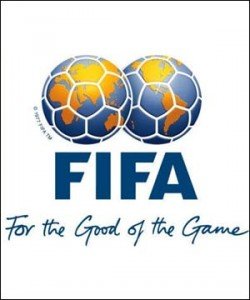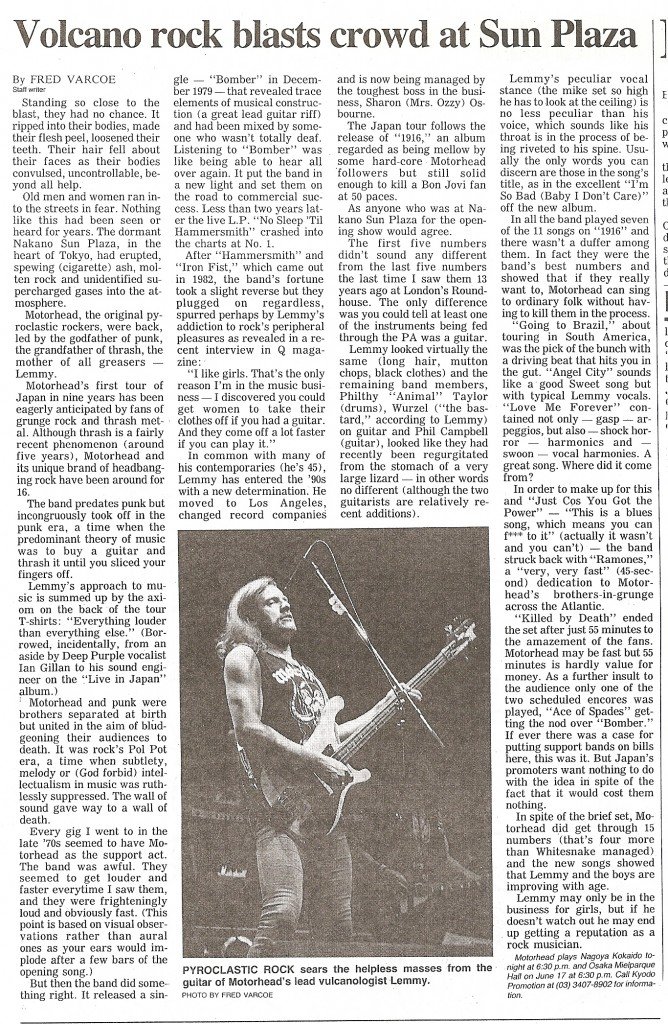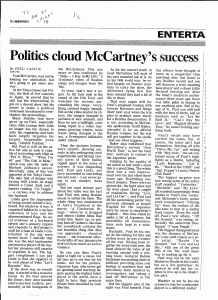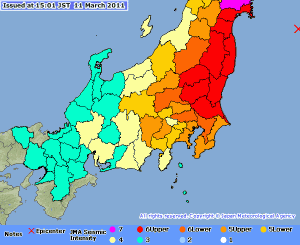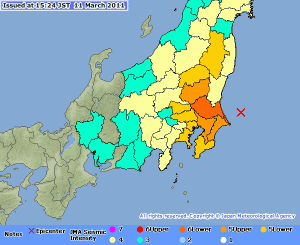Slash and Burn: Getting a ‘faceover’ in Korea
By Fred Varcoe
I’ve often wondered why so many South Korean actresses look the same. A South Korean friend once told me that 80 percent of the girls in her high-school class had had cosmetic surgery. And this wasn’t the middle of Seoul; this was smalltown Korea. Cosmetic surgery is huge business in Korea.
But I never expected to experience it myself. Probably because I’m not Korean. For many, having surgery is a routine thing to do. My wife’s had stuff done and her sister and even her mother. I didn’t notice.
At least, I didn’t notice until I checked old photos. My wife had quite significant bags under her eyes and my sister-in-law looked positively worn out. Surgery has taken at least 10 years off their faces; they look great. So they decided that it was my turn next.
I hadn’t thought about it, but they told me I had too many wrinkles around my eyes and my face was getting too lumpy. I got a new pair of glasses and could see they may have a point. And, to be honest, I had thought my face was turning to jello.
But not enough to splash $5,000 on a refit. So my sister-in-law blackmailed and bribed me. “Do it for your daughter,” she said. “She doesn’t want a daddy that looks like a granddaddy. And I’ll pay.” Convincing arguments – so I said yes.
The clinic was at the top of a fairly non-descript building with a vacant shop on the first floor. We were shown into a glass-panelled waiting room. A couple of women staff members looked at my face and talked to my sister-in-law (a lay expert). I got the go-ahead.
A very attractive young lady came in and put big dobs of cream on spots on my face. She was nice. I wish I’d had more spots, but she left.
Then I went to see a doctor. Nobody was speaking English. The doctor prodded my face, consulted with my sister-in-law and said OK. After further relaxation time in the waiting room, I was led to another room and told to take my shoes off and lie down on the surgical table. The doctor came in, told me to close my eyes and started to nuke my face with a laser. You could smell the flesh burning and feel the heat of the laser, which felt similar to the laser that nearly erased Sean Connery’s bollocks in Goldfinger. But after attacking my eight spots, I was led back to the waiting room again, bollocks safely intact.
Then it was time for the main show.
Cosmetic surgery, my arse! The results may be cosmetic, but the surgery is very real.
I’ve had lots of doctors cut me up on the operating table, but I was always asleep. Not this time. I was taken to an realistic-looking surgery, told to take off my shoes, given a pajama top that was too small for me and placed on the operating table. Two big lights shone down at me. First the nurse took my blood pressure. It was high (157/84). My unhealthy lifestyle, I thought. They wrapped the outside of my head and placed a cover over my upper torso that left a hole for my face. Then the nurse started washing my face with iodine.
All this time, my sister-in-law was present to act as interpreter – in Japanese, which didn’t help much as her Japanese is much better than mine. The doctor came in and I was told that they would thread a needle into my skin to allow the areas to be anaesthetized. It might be painful, he added, teaching me the Korean word for pain (paekum). As I was to be cut in four places (two sections of about 3 cm above each eye and two sections right beneath each eye, each about 6 cm), they did this four times. It felt like a big needle being threaded through my skin (mainly because that’s what it was) and it hurt like fuck.
Boom, boom, boom went the beat of my heart. Seriously. Was it my body or my mind reacting to this abuse?
Soon after, I felt the pressure of the scalpel, followed by the flow of blood as they opened up my face. I wasn’t sure what was going to happen after that – and I still don’t know what happened. But it took a long time. I was told they cut out about a centimetre of face from under my eyes, but they were also putting stuff in. There was a machine that seemed to inject something (glue, cement, landfill, botox – I don’t really know, but I suspect botox) into the holes cut in my face. When they did it below the eye, it pressured the eyeball and was very uncomfortable.
I became anxious. My blood pressure rocketed again and my heart was pumping so hard it felt like it was only a matter of time before it burst through my chest. The doctor was so concerned, he recalled my sister-in-law from the waiting room to try and get me to calm down. Eventually, my heart stopped trying to burst through my ribs, but I really wanted the machine to stop injecting me with stuff, because it hurt every time it did.
Finally, I guessed that they were doing some sewing. It was a huge relief. I didn’t want to be skewered or cut or cemented or traumatised any more. And I wanted to make sure the doctor hadn’t glued or sewn my eyes shut.
Then it was all over. I could open my eyes. They didn’t feel happy. The doctor said everything had gone fine. The nurses smiled and took their time cleaning me up, which was the only nice part of the whole two-hour procedure. They gave me a mirror. I looked like Dr. Frankenstein’s first experiment and it seemed I had about 50 stitches in all.
My sister-in-law came in. She was enthusiastic, but then spotted a problem. They hadn’t botoxed my forehead as she had requested (it was a bonus procedure). The doctor came back armed with a new syringe and jabbed it into my forehead about 10 times. Thankfully, that was the last procedure. I just wanted to go home and see my daughter.
But she was none too pleased seeing Daddy all bashed up. I told her Daddy had been to see a doctor and his face was painful. I saw a look of worry pass across her face. She wasn’t impressed with the results, but reassured by Mummy, she accepted Daddy’s latest disfigurement.
Daddy wasn’t too sure either, despite the enthusiasm of my wife and her sister. The stitched up scars looked ugly (they always do, of course) and the lasered spots were covered with skin-regeneration tape. I felt like I should be in a circus. But my wife and her sister had already decided we should go on a family trip to Daegu, Pohang and a temple or two. As I wasn’t allowed to drink alcohol during my recovery, I was one of the designated drivers (the other designated driver drank anyway). So, everyone else in Korea would be allowed to view the taped-up foreign monster. My wife had provided me with a pair of sunglasses that covered most of the scars, but I still had a large dressing under each eye. It was hard to eat chewy stuff like meat, so I ended up eating less and drinking less. I was allowed to remove the dressing after a couple of days, but my face was jaundice yellow.
The stitches came out six days after the operation and were removed by a very pleasant nurse who was very deft with the scissors. When I’ve had stitches out before, I’ve almost passed out, so I wasn’t looking forward to it. It took around 20 minutes and I managed not to pass out, just. Everyone was pleased with the results, but for me, it was still too early to tell. Eleven days on, my face was nearly clear and the scars less red, but my face felt tight. One of my friends said it seems like I can’t smile any more. The wrinkles in my forehead have gone.
More likely, they’ve just been paralyzed. According to Wikipedia, “Botulinum toxin is a protein produced by the bacterium Clostridium botulinum, and is the most powerful neurotoxin ever discovered.” It doesn’t repair your body, it just stops it working. So your frown doesn’t disappear, your frown muscles are zapped so they don’t have any choice but to stop frowning. I had a fair amount of trouble opening my mouth properly when I tried to eat. Six months later, most of my face is working again, but no botox means no youthful veneer. So if I don’t want a forehead that looks like the ocean outside my front door during a typhoon, I gotta go back for more “jab-a-syringe-in-the-ageing-foreigner” torture.
Maybe I’d be better off just adopting a healthy lifestyle.
You’re right; too late.
“Nurse!”
